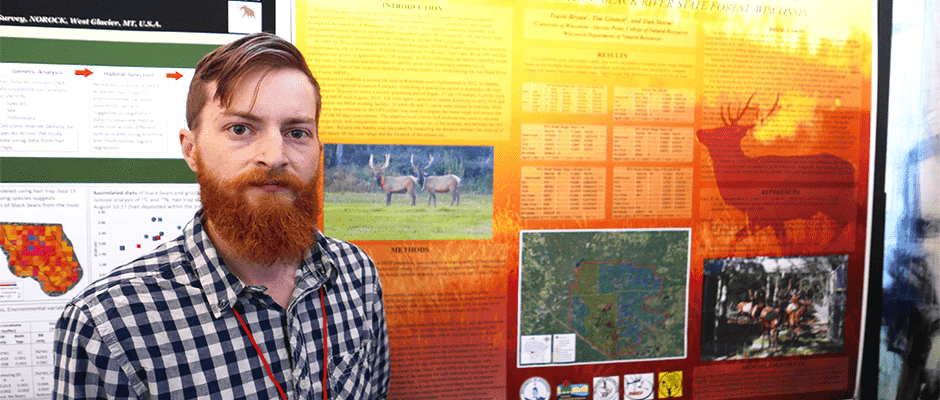Share this article
Male elk linger while females disperse after reintroduction
Male animals typically roam farther than females, defending large territories or traveling in search of mates. But in some cases, all it takes to reverse that pattern is an offer of food, according to new research presented at TWS’ 23rd Annual Conference last month. When managers reintroduced elk (Cervus elaphus) to the Black River State Forest in Wisconsin, the females immediately dispersed, while the males lingered next to the food plot where they were released.
“We expected the males to have larger ranges, but they actually had smaller ranges than the females…and it turns out most of the males were a lot closer to the release site after 60 days,” said Travis Bryan, a master’s student at the University of Wisconsin, Steven’s Point, who presented the research in a poster session at the Raleigh conference
The data came from 51 elk released over two summers, all fitted with tracking collars that uploaded data via satellite. Bryan is using the data to model elk habitat use, and as a first step in the project, he analyzed the elks’ movements in the first 60 days after release.
Contrary to expectations, the female elks’ core ranges — the areas where they spent the most time — were, on average, about half again the size of males’ core ranges. Females also dispersed more widely than males, establishing territories with centers nearly four times farther from the release site.
Bryan suspects that the male elk stayed clumped near the release site so they could take advantage of a food plot, which the Wisconsin Department of Natural Resources planted to help the animals get started in their new habitat. The elk were released in the summer, when male elk are growing antlers and preparing for the fall rutting season.
“My thought is that they probably found that really big nice source of food, and they were more concerned with building mass to their antlers than they were with finding a specific range,” said Bryan.
Header Image: Travis Bryan presents his poster at TWS’ 23rd Annual Conference in Raleigh, N.C. ©Nala Rogers








